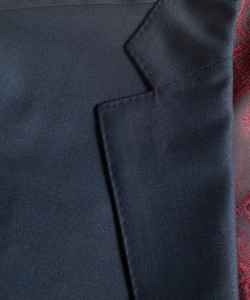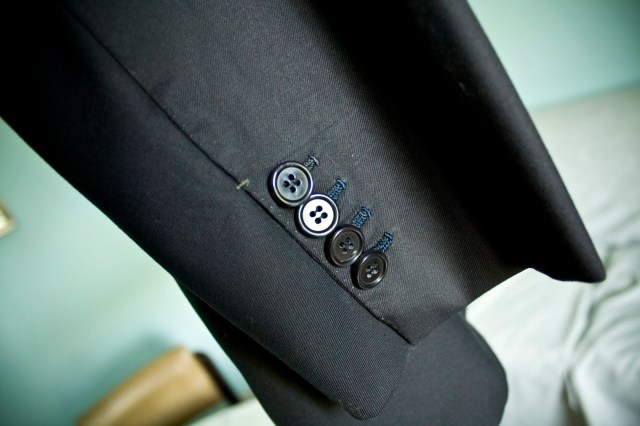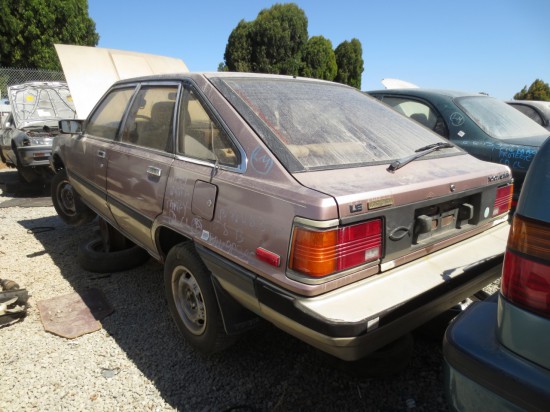It’s been a little while since I made my first post about suits, and I decided I would have a follow-up for that one in regards to the experience of trying to find my sartorial glory prior to posting the update to my previous post.
But before I begin, I’d like to talk a little bit about power supplies.
Stay with me. I used to work for a computer manufacturer, and one day, we were meeting with a new chassis manufacturer that would, in theory, provide us with our computer cases and the internal power supplies to go with them.
Now power supplies were (and are) an oft-overlooked piece of hardware when spec’ing out a computer build. One that can provide a steady stream of power while absorbing the occasional power spike can save your expensive investment from an early, smelly, death.

“If ONLY they had spent an extra $20!”
Now it used to be (and I may be accidentally aging myself here), you could tell the quality of a power supply by how heavy it was. The heavier it was, the more capacitors, resistors, and other groovy electrical components were built in to it and it could signify a good buy.
It didn’t take the cheap, crap manufacturers long to figure this out, as evidenced by our first meeting with one of these said manufacturers.
“How much do you want the power supplies to weigh?” they asked, as if it were an obvious question. We were perplexed, because a power supply’s weight shouldn’t really be variable. It should weigh whatever it weighs.
Turns out, this manufacturer would add weights to the power supply in order to make it heavier than it originally would be, thus giving the impression of quality. We didn’t buy from them.
But as I’ve noticed, items that give the APPEARANCE of quality are rife in the custom clothing industry. And things like functional sleeve buttons are the lead weights of the fashion industry.
When Cucumber and I were suit shopping, we dropped in to a suit store in which you’ve probably heard of. It didn’t take too long to figure out that the off-the-rack section wasn’t going to work for me (as I have mentioned, off-the-rack suits and I just don’t get along), but they had a section in which you could have custom clothing made for you. Not that it was bespoke, just that it was a brick-and-mortar form of made-to-measure. Not a bad thing, as long as you accept what it is.
But the sales rep was desperate to make a sale.
The sales rep that we had talked to was a nice enough guy, but it was pretty obvious that his commission went up drastically when custom clothing was ordered, as he was fairly well pushing us that direction from the moment we walked into the store. Can’t say I blame the guy, but the tactics in which he tried to push us towards custom were just kinda slimy.

You want a suit? I gotcha suit. Full’a canvas! N’stitching!
N‘Buttholes, aye..aye.. mean button holes!
One of the tactics he used, was in talking about how obviously high-quality the made-to-measure suits were, because they employed the use of pick-stitching in construction. Pick-stitching is (anymore) entirely decorative. It used to be that you only saw it on really high-end clothing. But like our friends who add weights to power supplies, the pick-stitch was quickly adopted by low-cost manufacturers as a way of bringing the appearance of quality to cheaper clothing.

A stitch in time may save nine, but it ain’t fooling anyone into thinking your suit cost more than it did.
The other item he mentioned: functional button holes. I am not a fan of them. Why? Because I’m not convinced of the utility of buttons on suit sleeves in the first place. There’s some debate about the origin of buttons on suit sleeves. The most obvious (and likely correct) source of buttons on the sleeves are a vestigial form that came from the ability to adjust the garment to better suit the wearer whether it be from the owner gaining or losing weight, or simply because it’s hot or cold.
The other origin story of suit buttons involves snot, and is therefore my preferred version. The story goes that Napoleon (or Alexander the Great, or Admiral Nelson, or Wellington, or whatever historical figure you like) repeatedly saw his men wipe their noses on the section of sleeve in which we now see button holes. So disgusted was he by the lack of professionalism, that he had his men sew buttons onto that spot, making it painful to wipe one’s nose.
Now I don’t know about you, but my nose isn’t such that it can only be wiped on one small section of sleeve. Thus, like at Waterloo, Napoleon’s efforts would be for naught.

“Napoleon (with stereotypical French accent): Ah hah! There is no WAY they will THINK of wiping their noses somewhere else! Now, let’s go invade Russia! There’s plenty of time before winter!”
Functional button-holes on suits, nowadays, are just another attempt at indicating quality. They don’t really offer any real adjustment – buttoning them all doesn’t reduce the size of the sleeve, and unbuttoning them just makes the sleeve split. In short, it looks awful. Worse yet, it’s advised that when you have functional sleeves, you leave 1-2 unbuttoned so that one can tell it was “custom made” (laa dee dah).
Here’s the thing I don’t like about all of this stuff – it’s an attempt to make it seem like your clothing is something that it is not. It’s an attempt to make your suit look fully bespoke (i.e. patterns made specifically for you, fully canvased, etc), and sold for a much higher price than it actually is. After having it tailored to me (which will be discussed in a future post), it looks really great. It fits well, and it will totally serve the purpose for which it is intended, at a price that was acceptable to me.
Adding pick-stitching, functional button holes, and whatever other flair you want is, to me, the same as buying a “Limited Edition” badge, and sticking it on your car.

It might be time to discuss just what exactly is “limited” on your car.
The irony of all of this? On my new suit that I ordered made for me (despite the fact that I didn’t order it this way), it came with functional button holes.
